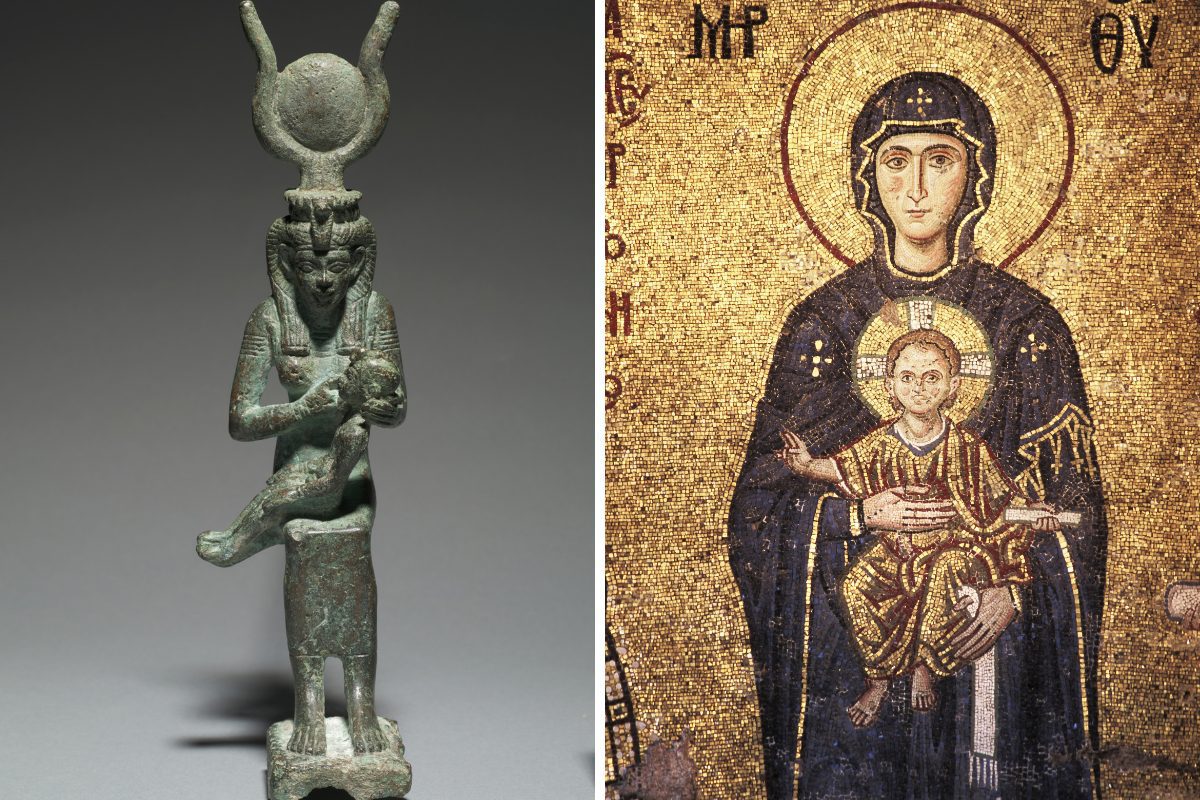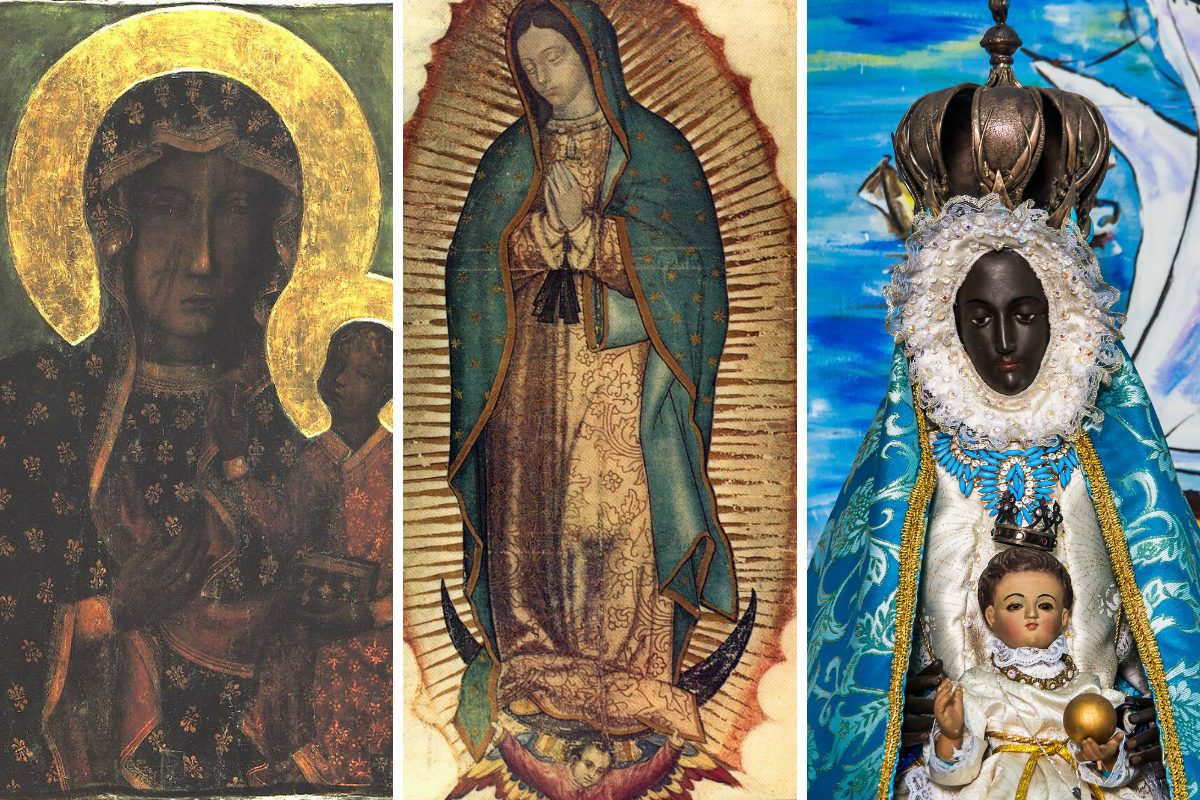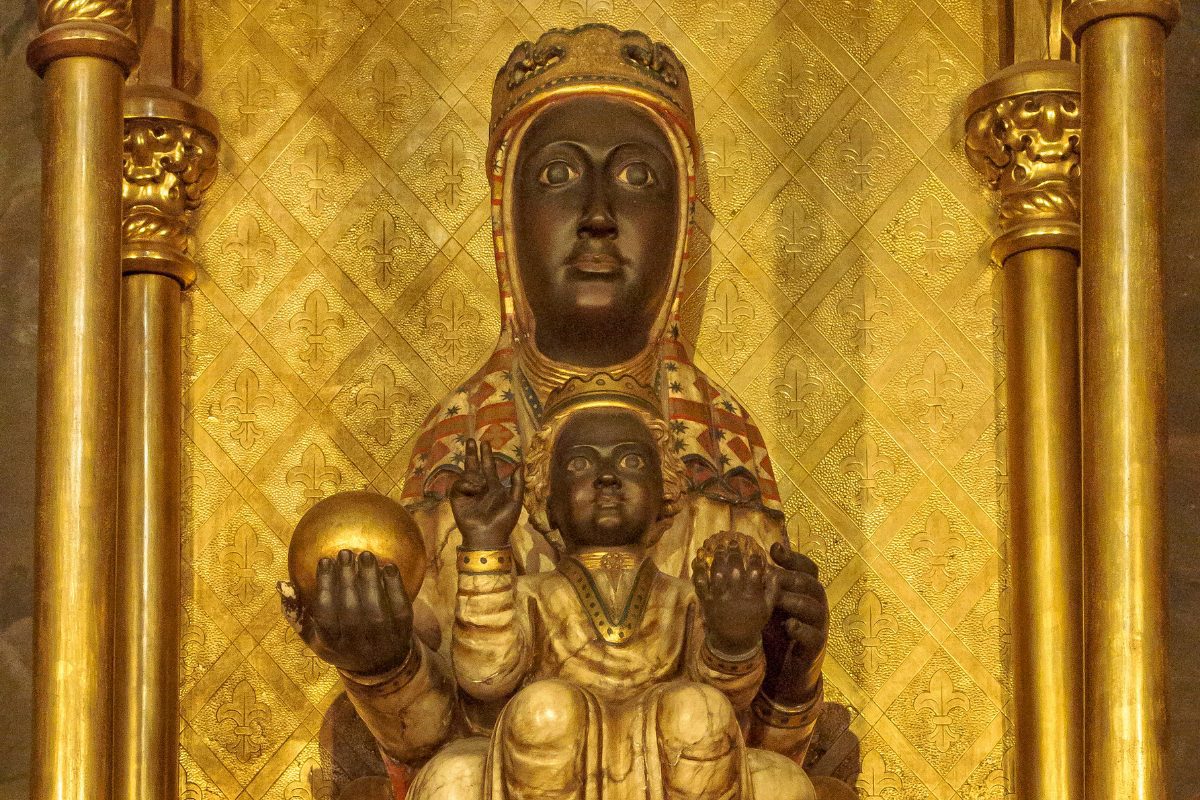A friend asked me recently about my work with the Black Madonna. I started writing a brief response, but then I reflected on it more and, in processing my thoughts, I wrote this entry.
I joined the Order of the Black Madonna some years ago, fell out of it, and picked it back up this year. I don’t know if it’s still an Order, but the purpose remains the same. It is devoted to “the Great Dark Mother, known by many names: Mitochondrial Eve, Au Set, Isis, Gaia, Cybele, Our Lady of Czestochowa, Santa Muerte, Sara la Kali, Our Lady of Monserrat, and others.”
“She is the balm for all suffering, the relief for obsessions and addictions, the matron of those who have been sexually marginalized and wounded, the mother of the oppressed, arbiter of justice, and the symbol for the deep, wise, female power that has been denigrated and treated as hidden/forbidden within more traditional religious contexts.”
A group of women gathers every month. We call on the Great Dark Mother, express gratitude, share stories and miracles, and go through the prayer petitions that people submit.
I don’t dismiss the Black Madonna altogether, but she’s not a part of my pantheon. So, what am I doing here? How do I connect to this work? Let’s dive in.
Mary
Let’s start with Mary. I’m not into Mary. I have never been. There’s not a lot there for me.
Conflating historicity, literature, and tradition, Mary was a teenager when she was betrothed, most likely in an arranged marriage, to an older teenager. She was objectified and used by God. Jesus was not especially friendly to her, and she doesn’t do a whole lot in the Bible beyond complying, get told off by Jesus, and suffer. The Bible does not even record her death.
Whether you see Mary as a goddess depends on your definition of “goddess” and “worship”. Officially, Christianity does not position her as divine, and while many Christians respect, honour, and venerate Mary, they do not worship her (it’s a fine line, I know). Mary is the only woman named in the Quran, which explicitly identifies her as the greatest of all women, but still a woman.
In his book The Virgin Goddess: Studies in the Pagan and Christian Roots of Mariology, Stephen Benko proposes that “there is a direct line, unbroken and clearly discernible, from the goddess-cults of the ancients to the reverence paid and eventually the cult accorded to the Virgin Mary.”
Mary unquestionably borrows pagan iconography and epithets, but I don’t see her as a goddess. Mary is Isis, Ceres, Artemis of Ephesus and other goddesses stripped of their power and sovereignty and turned into the perfect patriarchal wife and mother, the role model for all women in the Christian patriarchy. Mary’s great virtues are virginity, obedience, and motherhood. She has no purpose outside of her relationship with the male figures controlling her body and life.
Nevertheless, Mary is a selfless, devoted mother, and some people need that. Paganism has many mothers, but traditional patriarchal mythology doesn’t give us many stories of loving motherhood. Many mother goddesses are associated with creation, nature, and fertility more than motherhood’s everyday joys and sorrows. Motherhood is forgotten or denigrated in other goddesses. Ochún, for instance, gives her children away. Hera is remembered more for her jealousy than as a goddess of marriage who had about a dozen kids.
Demeter is a notable exception, as is Isis, but these divine mothers have other things to do. Demeter has to look after the land and the life and death secrets of the earth. Similarly, Isis is associated with the land, Nile, afterlife, throne, and magic. So, these divine mothers can hold you and comfort you, but they also have to go to work. Mary doesn’t. Mary doesn’t have anything to do other than listen to you, heal you, comfort you, and speak with Dad on your behalf. And some people need that, especially when Dad is cold, distant, abusive, and the founder of a massive, global, oppressive conglomerate.
As Christianity supplanted paganism, I can’t imagine it would have been as successful without the figure of Mary. Though she doesn’t fulfil the role of a goddess for me, I understand how others could see Mary as a manifestation of one.

The Black Madonna
“Black Madonna” refers to depictions of Mary as black. There are contemporary Black Madonnas, such as Larry Scully’s 1973 painting “The Madonna and Child of Soweto” in Johannesburg, South Africa. These modern Black Madonnas are about representation and the universality of Christianity.
However, contemporary Black Madonnas are not the subject of this feature. I am referring to the Marian statues and paintings that are primarily from the Late Medieval Period. There are hundreds of Black Madonnas worldwide, most of them in Europe, and many of them are Byzantine in style.
Why is the Black Madonna black? That’s a controversial question, and there are various theories.
One frequently cited explanation is physical conditions; the Madonnas turned black due to the accumulation of grime, smoke damage from votive candles or church fires, or the deterioration of lead-based pigments. That could be true for some, but many Black Madonnas were made black or brown.
Our Lady of Guadalupe from Mexico didn’t turn brown from grime or smoke. She was always brown. Her iconography is thoroughly Catholic, but Mexico’s indigenous people see more.
In A short history of Tonantzin, Our Lady of Guadalupe, educator and curandera Griselda Alvarez Sesma writes:
To many people, she is not either/or, but rather one: TonantzinGuadalupe. Her blend of indigenous and European features represents the beauty and sacredness of both cultures not just those of the dominant society. Her face is the face of today’s Mexican, Chicano, Mestizo.
Like African images of Mary that depict her racially as a Black woman, Our Lady of Guadalupe belongs to a category of Marian images that match the indigenous population. We also see the association of Mary with an Earth Mother goddess, and we return to Stephen Benko’s theory that the “Black Madonna is the ancient earth-goddess converted to Christianity.”
It’s not far-fetched. The Church assimilated pagan rituals and objects into Christian worship and converted pagan temples. Statues of Isis were physically converted and reused as icons of the Virgin Mary. Santa Maria sopra Minerva in Rome means “Saint Mary above Minerva”, though it was built over a temple of Isis. Notre-Dame de la Daurade, a basilica in Toulouse, France, was once a temple dedicated to Apollo and housed the shrine of a Black Madonna that was stolen in the fifteenth century.
Sociologist Leonard W. Moss and anthropologist Stephen C. Cappannari plotted Black Madonnas on a European map. They noted they are all found in regions once occupied by the legions of imperial Rome. They hypothesise that the Black Madonnas are “Christian borrowings from earlier pagan art forms that depicted Ceres, Demeter Melaina, Diana, Isis, Cybele, Artemis, or Rhea as black, the color characteristic of goddesses of the earth’s fertility.”

The orisha connection
As I mentioned at the start of this feature, I am not interested in Mary as a personal figure of veneration. However, I am interested in history, people, and the goddess connection. And I’m also interested in the orisha connection.
My approach to the Black Madonna is through two important Virgins from my homeland: Our Lady of Charity and Our Lady of Regla.
Our Lady of Charity is the Mother and Patroness of Cuba. She is not a Black Madonna, but like Our Lady of Guadalupe, Our Lady of Charity spoke to Spaniards, Creoles, and African slaves and continues to unite Cubans across race and class. She is syncretised with the orisha Ochún.
Our Lady of Regla is a Black Madonna syncretised with the orisha Yemaya. She is the Great Ocean Mother, strongly protective, and cares deeply for her children. When I feel anguish, I turn to Yemaya. She is the centre of my work with the Black Madonna.
People regularly ask for good energy and prayers. My participation in the Order of the Black Madonna is about petitionary prayer, humbly asking a deity to provide for another. I turn to Yemaya for those prayers. Like the Black Madonna, Yemaya is the Mother of All. She understands sorrow, and she comforts, nurtures, cleanses, and heals. But unlike Mary, Yemaya is a fierce warrior. She picks up Ogun’s machete and goes to battle for her children. Yemaya retains her sovereignty and is a powerful witch with unbreakable spells.
French writer and feminist Simone de Beauvoir wrote, “The supreme victory of masculinity is consummated in Mariolatry: it signifies the rehabilitation of woman through the completeness of her defeat.”
Women around the world find solace in the sympathetic figure of Mary against the brutality of the patriarchy, but it comes at a price. Mary diminishes women’s sexuality, deprives women of leadership, and suppresses the goddess. The Black Madonna is more interesting, mysterious, and provocative, but even as a remnant of a mother goddess, she is still enchained and subordinated in Christianity. I prefer my goddesses wild and free.


Your perspective does not go back in time far enough, back the the cuneiform tablets of Sumer that assert The Black Madonna was Ninmah, the Creatrix of Eve and Adam, who was forced out along with EnKI The Son of Man who then went to Egypt as Isis and Set-Enki (or Set-Enoch), two of the Priory of SION.
Nephthys was really the Sumerian Damkina, the WIFE of EnKi, who bore the Eve in the E.din in Sumer.
She later became renowned as Virge Mare, Queen of the 7th Planet Earth. Wild enough?
Were Ninmah and Eve (Queen of Earth 7th planet) both the Black Madonna?
Shalom . Love eternal to you daughter . Then you
MUST KNOW EMILY DICKINSON
The Holy Grail BAIGENT . forbidden fruit is mine to give to the FEMALE MESSAIH SAT ON MY KNEE . But where is my other daughter the cesarean birth not the VAGINAL ONE BORN AFTER HER SISTER . THE VATICUNT. KNOWS THERE WERE TWO NATIONS IN MY WOMB . WELL MY CAMELS ARE IN BROOME . AND I WAS BORN ON 21 MARCH 1959. IN LONDON . ASHKENAZI MOTHER SEPHARDIC ABBA
I LIVED ONCE IN ITALY AND I RAOMED THE VATICUNT CITY AND BUILDING . HA HA AND THEY QUEST FOR ME .